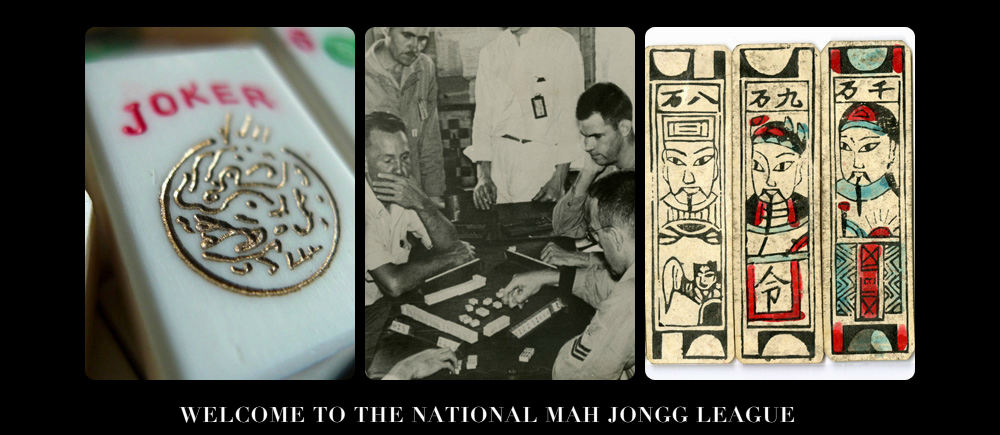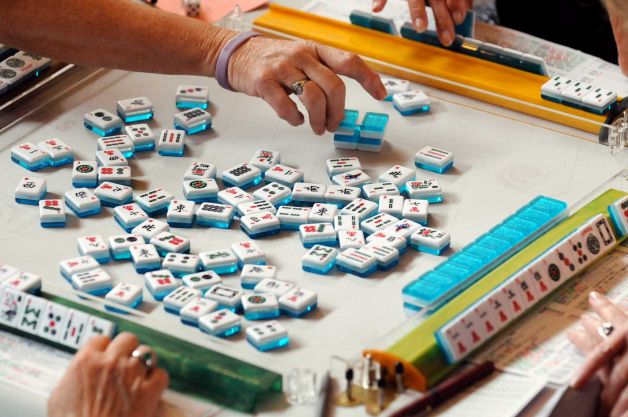Mahjong 101
-
Mahjong 101: Making Mahjong
When all thirteen (13) tiles match a hand on the card, and you either pick the 14th tile needed to complete the hand, or someone discards it, you may declare “Mahjong” and you are the winner. Scoring is as follows: If you make Mahjong on a discard, you are paid the value of the hand. Discarder pays double. If you pick your Mahjong tile, you are paid double the value of the hand.If you make Mahjong on a discard and you were bet on, you get double, and you share your winnings evenly with the bettor. If you pick Mahjong and are bet on, you get four times the value…
-
Mahjong 101: Jokers
A joker may be used as a wildcard to fill in any pung, kong or quint. A pung, kong or quint may be entirely composed of jokers. A JOKER MAY NEVER BE USED TO COMPLETE A PAIR. The singles and pairs hands are worth more because you may not use any jokers in these hands. Keep in mind you cannot use a joker in a singles and pairs set such as NEWS or 2009 If someone has called a tile and exposed a pung, kong or quint and they are showing jokers, if you have the tile they need, you may exchange it and keep the joker for yourself. In other…
-
Mahjong 101: Calling Tiles
If the hand you are playing has an X next to the value of the hand, the hand is designated as a calling, or open hand. A hand with a C is a closed hand and if a tile you need is discarded, you may not call it from the table. If a tile you need is discarded, and you are playing an open hand, you may call the tile to complete a pung, a kong, a quint or to make Mahjong. A tile may not be called to make a pair, unless it is your Mahjong tile. Once you call a tile, you must expose the pung or kong…
-
Mahjong 101: Picking a Hand
The most difficult aspect of modern American of Mahjong is to determine which hand to aim for. While you may have many tiles that belong in one category, a player may be missing a whole family, or a pair of tiles that may prove difficult to obtain. Next to each hand is a number, which tells how much the hand is worth. The harder the hand, the more it is worth. A hand with a value of 25 is usually easier to work out than a hand with a value of 50. Back to Mahjong 101: The Rules
-
Mahjong 101: Reading the Card
Mahjong cards are printed in three colors; red, blue and green. If a hand is printed entirely in one color, it means that all tiles in that hand are to be from ONE SUIT. Similarly, if a hand is printed in two colors, the tiles are to be selected from TWO DIFFERENT SUITS; and three colors, THREE DIFFERENT SUITS. For example, in consecutive runs, a hand may read: 11 222 3333 444 55, in all one color. In order to make Mahjong, you must have all the above tiles, in the above order in one suit only. In other words, if you are using Dots, you must have two one dots, three two dots, four three dots, etc. Another…
















